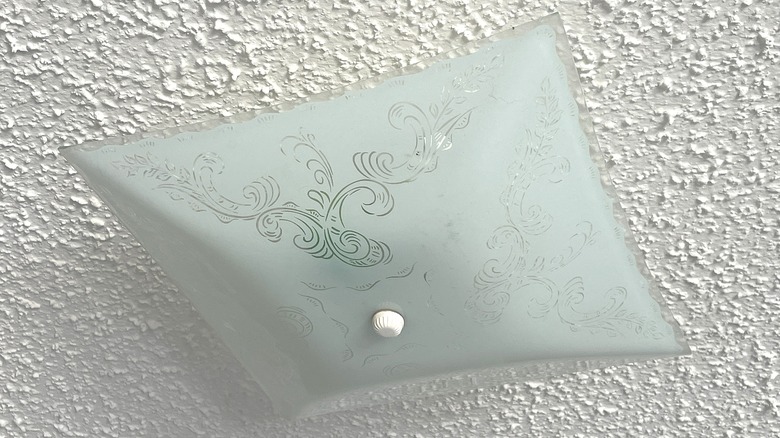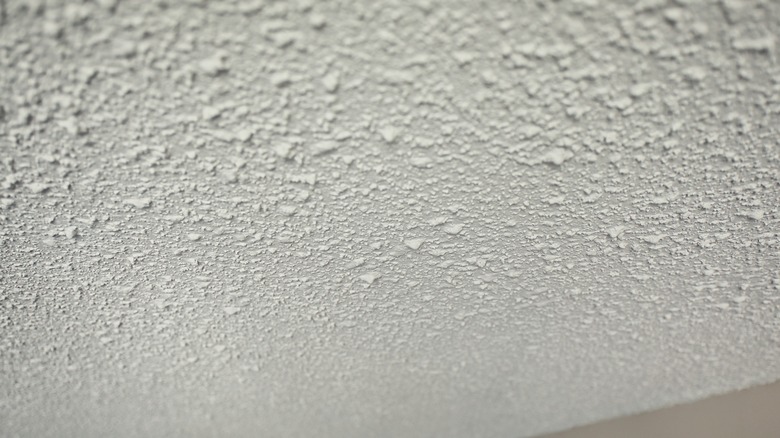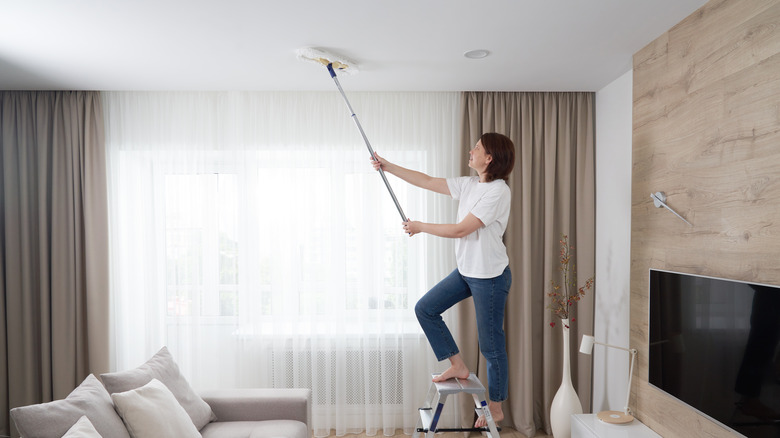The Pros & Cons Of Installing A Modern Popcorn Ceiling, According To Our Expert
While the aesthetic of popcorn ceilings is somewhat out of style now (you might even be wondering why do homes have popcorn ceilings at all?), our expert shared some insight on when they can be a great option, as well as their potential downsides. Erika Dale, an interior designer and founder of Erika Dale Interior Design, told House Digest exclusively about how popcorn ceilings have several pros and cons, and you'll need to evaluate what works best for your home. For example, if you're working with a tight budget, Dale says popcorn ceilings could be a good choice; however, she also explained they are difficult to clean.
Some may have concerns about the safety of popcorn ceilings due to outdated information, but Dale explained that modern versions are not a hazard. "Older popcorn ceilings before the 1990s used a spray-on mixture that included asbestos, whereas modern popcorn ceilings are made with alternative, safer materials," she said. Because there are so many pros and cons, these tips should help you decide if popcorn ceilings are right for you. Depending on your needs, budget, and preferences, popcorn ceilings could be a perfect addition to your home or a nightmare to avoid. For those that already have this style or are looking at a home that does, you can easily remove popcorn ceilings if you aren't satisfied with them.
Pros of popcorn ceilings
Many people dislike the appearance of popcorn ceilings, but Erika Dale said exclusively to House Digest that they do have a few big benefits. "While popcorn ceilings have gotten a bad rap, there are some advantages to popcorn ceilings in your home," she said. Dale explained that because these ceilings are so simple and fast to install, they are generally a more low-cost option, and can work great for a renovation running out of funds or for an inexpensive option when building a home.
Besides being cheaper, it turns out that popcorn ceilings are pretty good at blocking out sound, according to Dale. "In addition, thanks to their thick texture, the material actually absorbs and muffles sound, giving it an acoustical advantage over smooth ceilings, as well as efficiently disguises imperfections in the ceiling," she said. If you're working on an in-home music study, or don't want to hear your family or housemates stomping around upstairs, popcorn ceilings might work well for you. Dale also explained that it is possible to install this type of ceiling yourself if you can get your hands on a texturizing spray gun. In comparison, having it installed professionally will cost between approximately $1 to $1.60 per square foot.
Cons of installing a modern popcorn ceiling
This type of ceiling is generally considered outdated now, and Erika Dale told House Digest exclusively that one of the hidden downsides of popcorn ceilings is that installing one could decrease the resale value of your home. If you're planning to sell in the future, these ceilings might not be worth it. Lack of durability and the hoops you may need to jump through for potential repairs also contribute to the downsides of popcorn ceiling: "In addition, it can easily crumble if you make contact, and if you need to repair, matching the style and texture exactly for a good match may take the expertise of a professional," Dale explained. Though they're inexpensive, these cons make popcorn ceilings more of a hassle.
Most of all, popcorn ceilings can be extremely troublesome to clean, according to Dale. "...[T]hey can be challenging to keep clean, thanks to the porous and rough texture, which grabs and hangs onto dust, making the ceilings look dingy and eventually leading to discoloration," she said. If you're not looking for extra sound proofing and have a more flexible budget, you probably will want to go with an option other than a popcorn ceiling. Though they can be perfectly fine in some scenarios, the downsides may outweigh the benefits depending on your specific situation.


